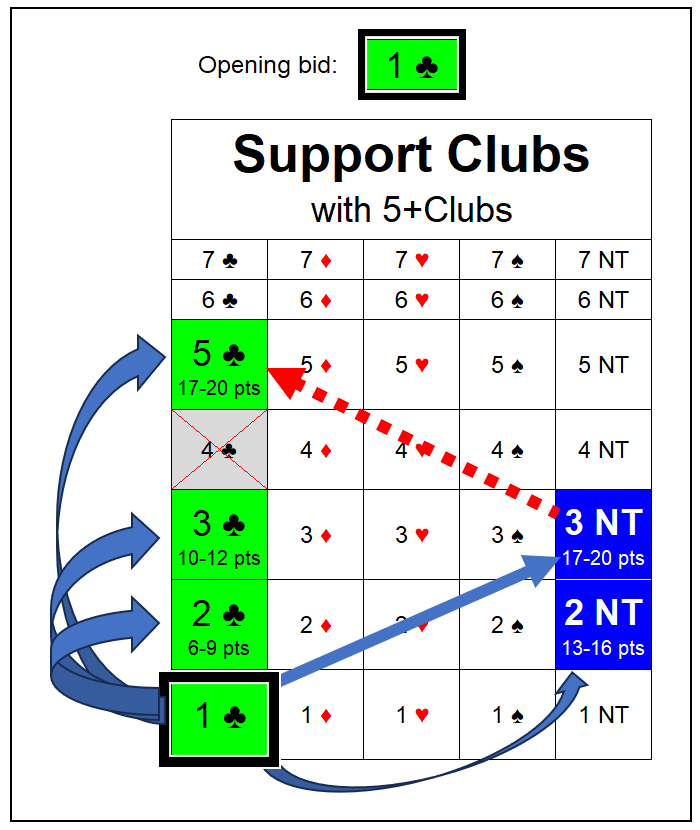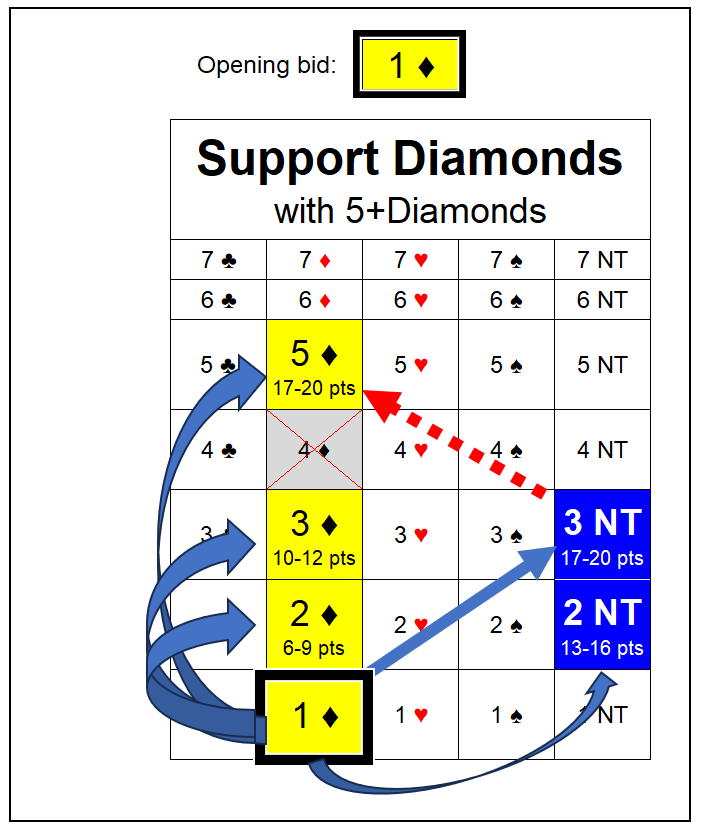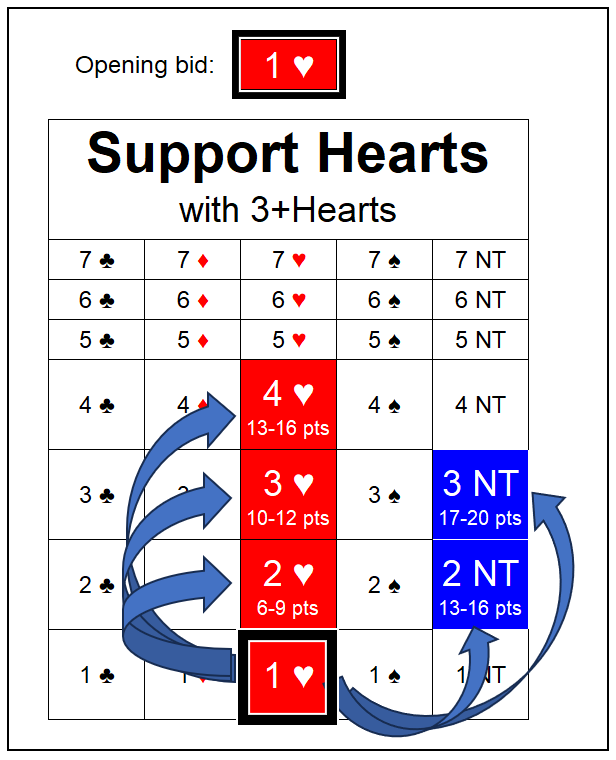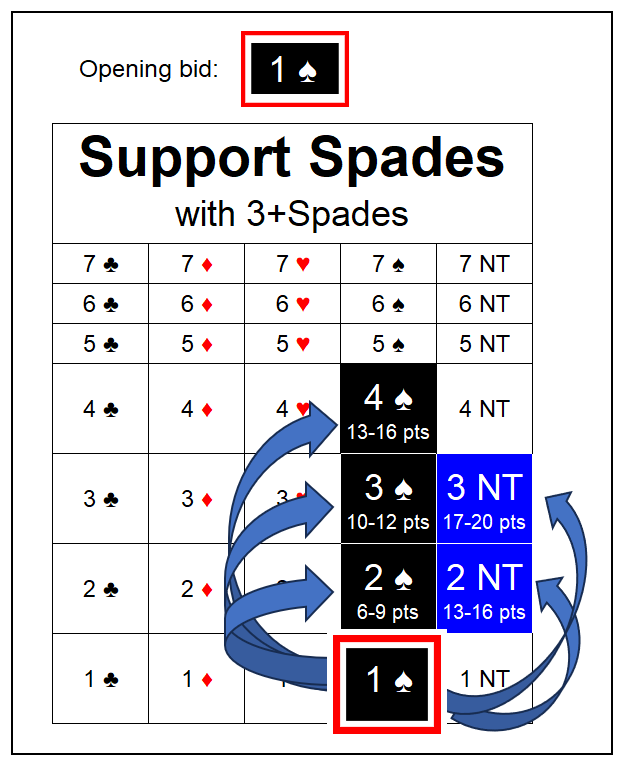



| Extra Trump Suit Points (only in the trump suit) | |
| Trump Suit Length | Pts |
| 3 cards | 0 |
| 4 cards | 1 |
| 5 cards | 2 |
| 6 cards | 3 |
| Short Suit Points (not in the trump suit) | |
| Other Suit Lengths | Pts |
| Void Zero cards (with 5 trump cards) (with 4 trump cards) (with 3 trump cards) | 5 4 3 |
| Singleton 1 card | 2 |
| Doubleton 2 cards | 1 |
| Response to 1-level Suit Opening | ||
| Point Count | Raise | Response |
| 6-9 pts | Single | 2-level response |
| 10-12 pts | Double | 3-level response |
| 13-14 pts | Triple | 4-level response |



